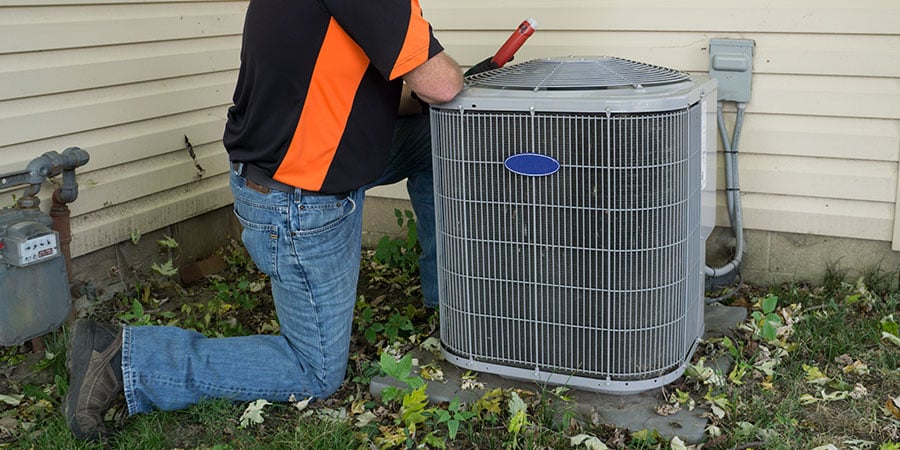As the temperatures go lower, you are expected to pay up to 17% extra for heating this winter. This is because you will be spending most of the time in the house and will have to raise your heating appliance.
Despite this fact, the good news is that you can use several strategies to keep your power costs as low as possible while keeping your house warm and toasty. These strategies include:
Get a smart thermostat
One tip for lowering your heating expenditure is to avoid turning on the heat too frequently and instead set it at a lower temperature for at least 8 hours every day. Lowering your thermostat by a few degrees can help you save money on heating.
You should get a smart or WiFi thermostat that allows you to program the temperature to adjust automatically when you’re not at home or asleep.
What’s amazing about smart thermostats is that they recognize your patterns and adapt automatically.
If buying the thermostat for the first time, keep in mind that not all smart thermostats will work with your HVAC system, and they are significantly more expensive than standard thermostats.
The good thing is that when you see how much money you’ll save on your heating bill, you’ll likely have no regrets about the purchase.
There are a wide variety of thermostats in the market that you can go for. If you aren’t sure about the right one to go for, get the input of an experienced furnace repair service provider.
Invest in a space heater.
Did you know space heaters consume less energy than furnaces or central heating systems? Instead of heating the entire house, consider utilizing a space heater in the area you’re currently in or lowering your thermostat and using a space heater for increased heat.
When you get the space heater, ensure it’s the right size for your space. The last thing you want is to invest in a unit and later realize that it won’t give you the results you are after.
To save even more money, get a unit that has a high energy star rating. Such an appliance will be expensive to buy, but in the long run, it will save you money and give you a long lifespan.
Keep most of the heat inside.
Making sure your home isn’t leaking heat is one of the best ways to remain warm. Windows and doors can account for up to one-third of a typical home’s heat loss. Air can also leak into and out of your home through cracks and gaps, such as electrical outlets, baseboards, and attic hatches.
You should seal around these apertures to keep warm air inside and drafts out. When well done, caulking leaks can save a typical household 10 to 20% on annual heating and cooling expenditures. Weatherstripping your windows, on the other hand, can save you 5 to 10% on your annual heating and cooling expenditure.
Closing the curtains in the winter can help prevent heat loss from a heated room by up to 10%. Curtains that are hung near the windows can assist reduce up to one-fourth of that heat loss.
During the day, however, raising curtains on sunlit windows can help improve temperatures via solar radiation.
Remember to close the curtains at night or on windows that don’t get as much sunlight.
Get smart plugs
You may be surprised to learn that many of your electronic devices consume energy even when turned off when plugged in.
Thankfully, investing in smart plugs can help you conserve energy by allowing you to monitor the amount of electricity a specific device consumes via WiFi controls and even shutting off specific outlets entirely.
Keep the filters clean.
This is also an excellent opportunity to perform routine maintenance on your heating and cooling systems.
Maintain clean furnace filters to keep the unit from working harder than it needs to. You can clean and reuse some filters, but others must be replaced completely, so check the maintenance requirements for your model.
Consider hiring an HVAC (heating, ventilation, and air conditioning) professional to assess your system and recommend future upgrades.
Use the devices efficiently.
Many people use technology constantly for work, school, leisure, and socializing, especially as they spend more time indoors during the winter. This can result in increased energy use and expenses.
Using the energy-saver option on your devices, appliances, and even some heating equipment could help you save energy without sacrificing performance. This may also be referred to as “low power mode,” “battery saver,” or similar, depending on your product.
You should check that the standard or normal picture setting on your TV is selected and that energy-saving functions such as automatic brightness management are enabled.
Enabling “auto power down” on your gaming console will ensure it enters low-power mode when not in use.
Also, avoid using your game console to access streaming video. The reason for this is that to stream a movie, the game console can take up to ten times the energy of, say, a Roku box or an app on your smart TV.
You also should consider shutting off any gadgets that are not in use. Consider an advanced power strip to prevent electricity waste from idle gadgets that may still be consuming power in standby mode if you need a power strip to plug in more devices and equipment and make it easier to turn them all off at once.
Parting shot
These are some tricks you can use to keep your house warm without spending a fortune on it. As you have seen, you can use plenty of tricks to your advantage.
You can do most of the work, but work with experienced furnace service Port Jefferson providers for the best outcome. These professionals will help you find the right and efficient appliance.
They also will help you keep the unit in top shape at all times. For example, they will help you clean and repair the appliance.

